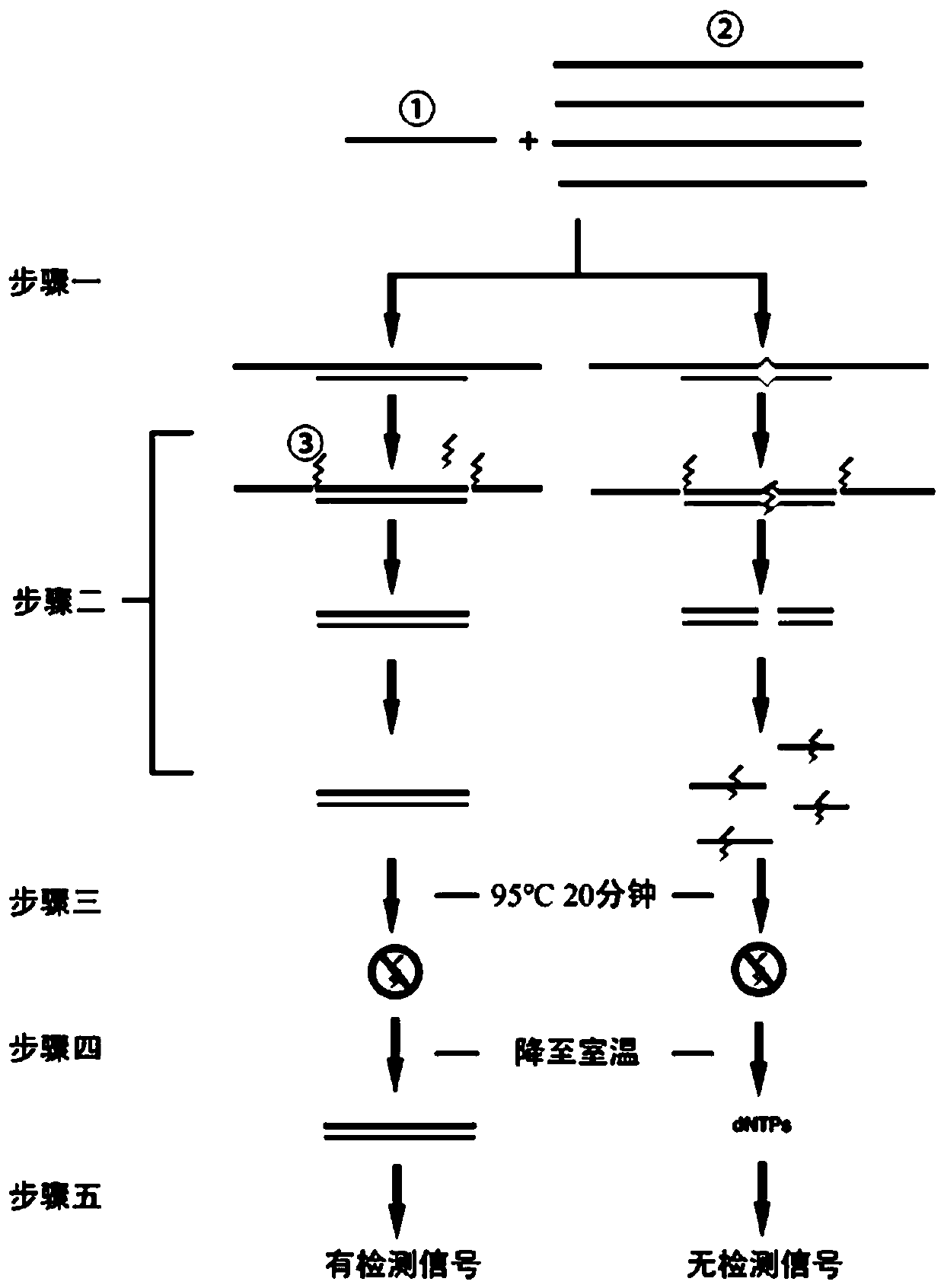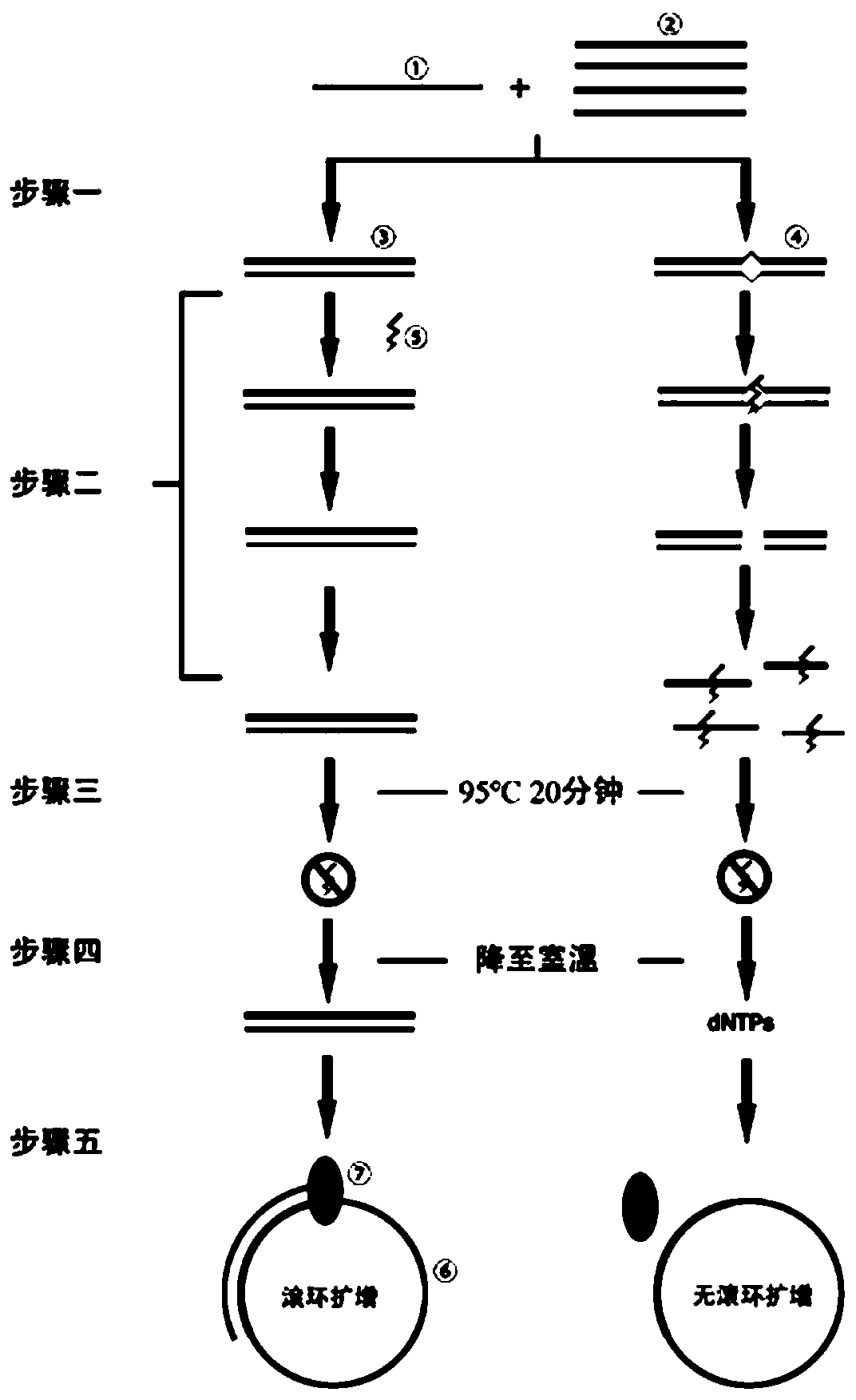High-specificity nucleic acid detection reagent and using method thereof
A detection reagent and high-specificity technology, applied in the field of high-specificity nucleic acid detection reagents, can solve problems affecting the high specificity of nucleic acid, and achieve low-cost detection, easy operation, and high-fidelity specificity detection
- Summary
- Abstract
- Description
- Claims
- Application Information
AI Technical Summary
Problems solved by technology
Method used
Image
Examples
Embodiment
[0035] Example The highly specific nucleic acid detection reagent combined with RCA technology detects let-7e, a member of the microRNA let-7 family.
[0036] MicroRNA let-7 is a 22-25 nucleotide long microRNA family with 9 members (let-7a~let-7i), they are involved in all stages of the life process and are important gene expression regulatory molecules one. However, family members differ very little (1-3 nucleotides), and accurate detection of family members is challenging. In this example, the microRNA family member let-7e is detected by rolling circle amplification technology (RCA for short) after the processed sample is detected by a highly specific nucleic acid detection reagent.
[0037] 1. Design specific probes and prepare samples.
[0038] Taking the microRNA let-7 family (let-7a ~ let-7f) as the detection object, DNA probe probe 7E was designed according to the nucleotide sequence of let-7 family members, as shown in Table 1.
[0039]
[0040] Nucleotides marke...
Embodiment 2
[0070] Example 2 Let-7e, a member of the microRNA let-7 family, was detected by combining the Lego-specific nucleic acid detection reagent with PCR technology.
[0071] In this example, samples 1 and 2 in Example 1 were first treated with highly specific nucleic acid detection reagents, and then let-7e was detected by reverse transcription real-time quantitative polymerase chain reaction (RT-qPCR for short). Samples not treated with CEL I served as the control group.
[0072] In the experiment, the Taqman probe RT-qPCR kit from Thermo-Fisher Scientific was used to detect the above samples.
[0073] 1. Process samples with highly specific nucleic acid detection reagents.
[0074] Formation of hybrid double strands: Mix 200 nM 5 μl of specific probe probe 7E with 100 nM 5 μl of sample 1 and 100 nM 5 μl of sample 2 respectively, raise the temperature to 95°C, and incubate for 5 minutes. Cool down to room temperature naturally.
PUM
 Login to View More
Login to View More Abstract
Description
Claims
Application Information
 Login to View More
Login to View More - R&D
- Intellectual Property
- Life Sciences
- Materials
- Tech Scout
- Unparalleled Data Quality
- Higher Quality Content
- 60% Fewer Hallucinations
Browse by: Latest US Patents, China's latest patents, Technical Efficacy Thesaurus, Application Domain, Technology Topic, Popular Technical Reports.
© 2025 PatSnap. All rights reserved.Legal|Privacy policy|Modern Slavery Act Transparency Statement|Sitemap|About US| Contact US: help@patsnap.com



